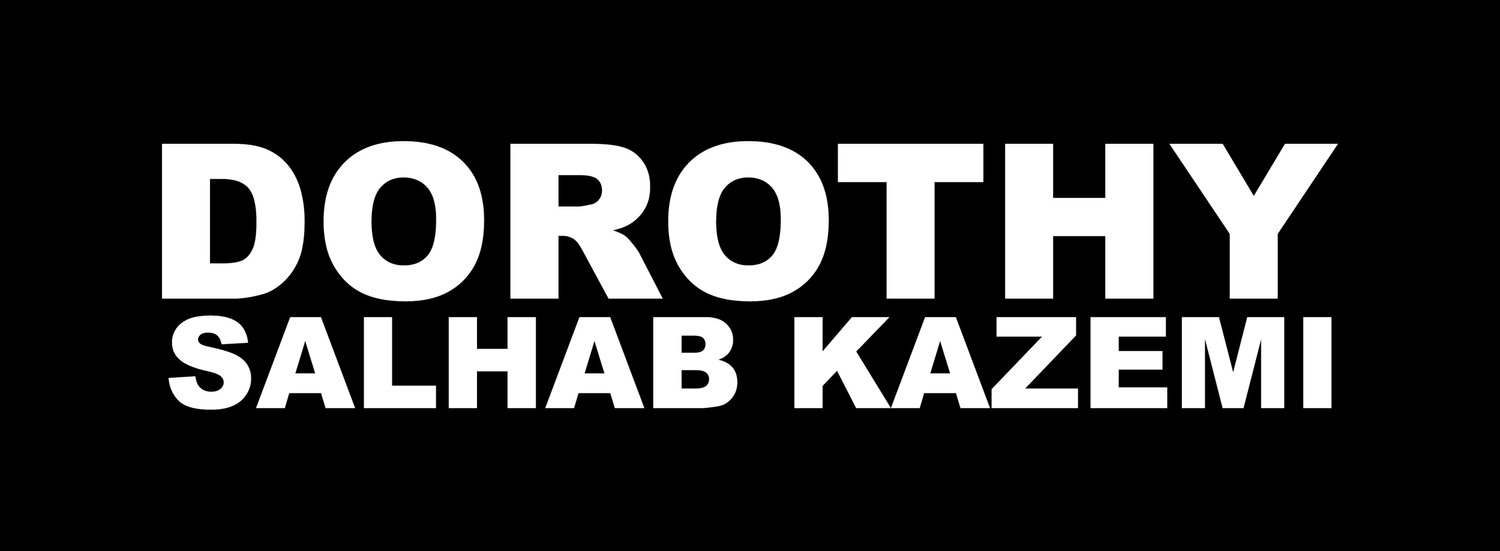BIOGRAPHY
Dorothy Salhab Kazemi (1942-1990) was the pioneer of modern art ceramics in Lebanon.
Growing up she resided between Tripoli and Beirut, Lebanon. During the political upheaval of 1958, she joined Broumana High School where Quacker values of simplicity and equality left a deep lasting impression on her and a basis of principles of how she would go on to live her life.
She started her university education at the Beirut College for Women (known today as LAU- Lebanese American University) before she moved to the American University of Beirut (AUB) where she graduated with a degree in English Literature in 1963. Simultaneously she indulged in several Fine Arts courses offered at both universities.
On a student trip to Copenhagen, Denmark, she was exposed and captivated by Modern Ceramic Art as developed by the Scandinavians. She had always love earthenware pottery traditionally used in Lebanese households, especially at her grandmother’s in her native village Roumieh, Mount Lebanon.
After graduating from AUB, she moved to Denmark in 1965 to pursue her passion for ceramic art. She learnt Danish and trained under the renowned Danish ceramist, Gutte Eriksen, from whom she adopted the skills of throwing, glazing and firing.
In 1968, she moved with her husband Shams Kazemi, to Glasgow, Scotland, where she taught ceramics and held her first exhibition.
In 1971, She settled back in Beirut to establish the first Ceramics Department in Lebanon at the BCW and set up her own workshop/atelier at her grandmother’s house in Roumieh.
As she kneaded the clay, kicked her wheel, glazed and fired her pots as she looked at the Mediterreanean sea, the red tiled roofs and the snow-covered mountains of Mount Sannine.
She used Lebanese clay and worked with stoneware; a technique never yet used in Lebanon. She was the only ceramist to fire Lebanese clay at a temperature as high as 1250-1500 Celsius.
During her stay in Lebanon, she participated in five Franco-Syrian archaeological excavations in Mayadeen Rahba in Syria. It was an opportunity to further deepen her knowledge of Islamic ceramics.
After the Lebanese civil war broke out in 1975, Dorothy and her diplomat husband moved to Geneva, Switzerland. She lived between Geneva and Verteillac in the Dordogne, France, where she started another workshop and worked until her death in 1990.
STYLE
“The work of Dorothy Salhab Kazemi is an example of the synthesis between the Occident and Islam, a clear proof of the certainty of harmony in the world. The most notable homage we can pay to her memory is without doubt the stress the greatness of a character where the fineness of the human soul has no boundary.” Francoise Espagnet

Education & Work
1961- 1963
Studies art at Beirut University College (Known today as the Lebanese American University), then English literature at the American University of Beirut, where she received a BA.
1964
Attends the school of Arts and Crafts in Copenhagen, Denmark.
1966
Studies under the renowned Danish ceramist Gutte Erikson.
1968-1970
Teaches ceramics in Glasgow, Scotland.
1971-1982
Launches the first school of ceramics at Beirut University College and teaches for nine years.
1983
Appointed ceramic expert on the French-Syrian archeological excavation site of Mayadin in Syria.
SOLO EXHIBITIONS
1967 Copenhagen - Denmark
1968 Compass Gallery, Glasgow - Scotland
1968 Gallery One, Beirut - Lebanon
1972 Public inauguration Mural Fresco, Beirut - Lebanon
1974 Designmuseum, Copenhagen - Denmark
Contact Gallery, Beirut - Lebanon
1975 National Museum of Damascus - Syria
Artisans du Liban et d’Orient, Beirut - Lebanon
American University of Beirut - Lebanon
2016 Alice Mogabgab Gallery, Beirut - Lebanon
GROUP EXHIBITIONS
1964 Den Frie, Copenhagen - Denmark
1965 Tuborg Kunstfond, Copenhagen - Denmark
1979 French Cultural Center, Damascus - Syria
1980 Arab Women Artists, Baghdad - Irak
1988 Maison des Jeunes et de la Culture, Riberac - France
1990 Ferme de Lussac, Dordogne - France
2017 At the Still Point of the Turning World, There is the Dance, Sursock Museum, Beirut - Lebanon



